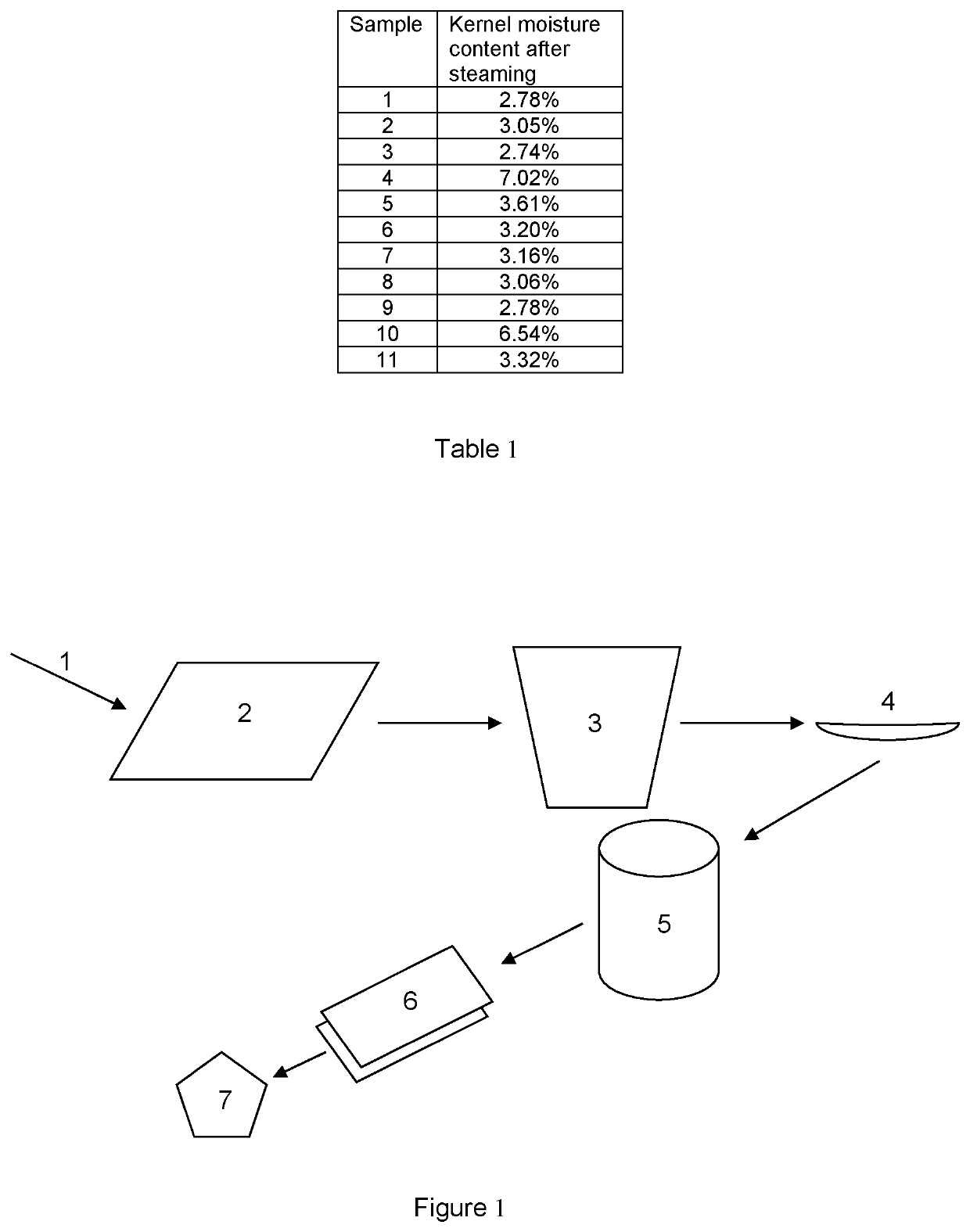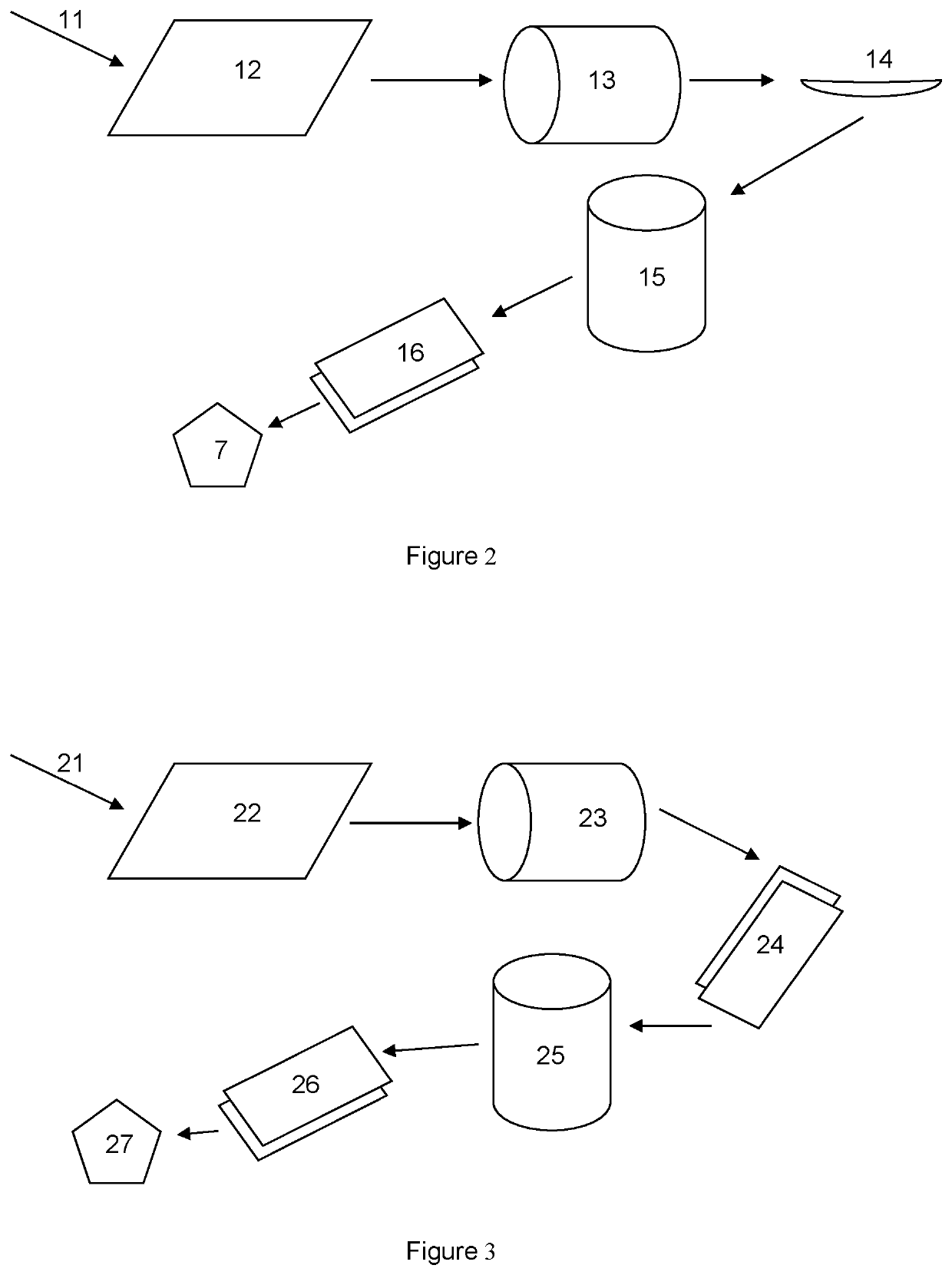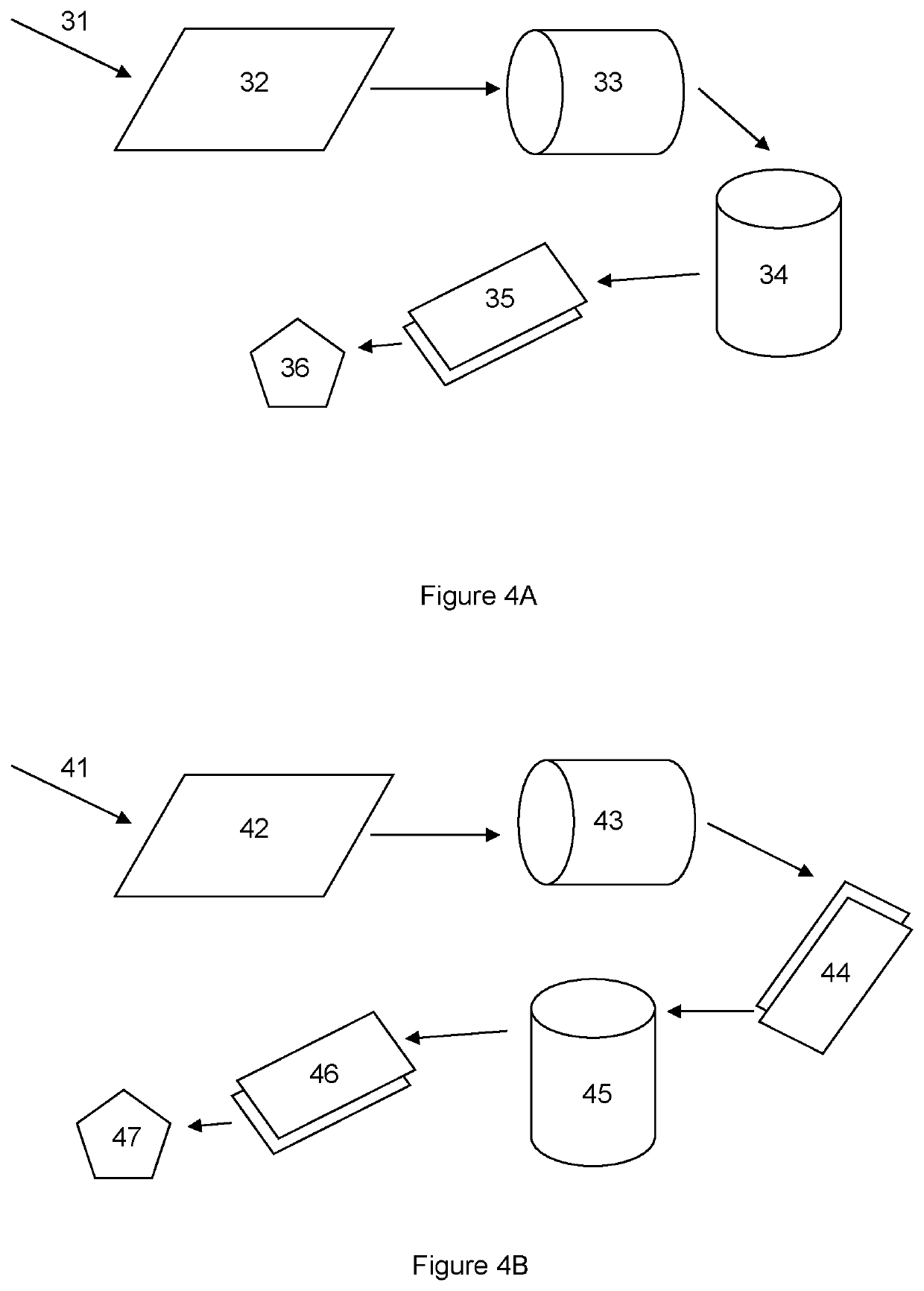Pecan nut kernel extraction method
a technology of pecan kernels and nut kernels, which is applied in the field of pecan kernel extraction methods, can solve the problems of high production cost, high percentage of broken kernels, and difficulty in cracking shells and their kernels, and achieve the effect of decreasing the moisture content of shells
- Summary
- Abstract
- Description
- Claims
- Application Information
AI Technical Summary
Benefits of technology
Problems solved by technology
Method used
Image
Examples
example 1
tivar (Nuts which are not Pre-Cracked)
[0091]Mixed cultivar pecans in-shell (1), with a medium kernel content of about 51% (shell to kernel ratio), and with a kernel moisture content of less than 4% and a shell moisture content of between 8% and 10%, were pre-sized (2) into a size range of 22 mm to 24 mm.
[0092]The nuts in shell were then boiled (3) for 10 minutes. As a result of this, the kernel moisture content of the nuts increased to between 4% and 5%, and the shell moisture content of the nuts increased to about 20%.
[0093]The nuts were allowed to cool (4) for 5 minutes. The nuts were then exposed to liquid nitrogen (5) for 20 seconds and cracked in a double jaw-type cracker (6) with a total taper from top to bottom of 2.5 mm in less than 5 seconds following completion of the exposure to the liquid nitrogen.
[0094]This resulted in a recovery of 100% fully intact kernels with 100% cracked and shelled after cracking (7).
[0095]The process flow of this example is indicated graphically ...
example 2
tivar (Pre-Cracked and Pre-Sized Nuts)
[0096]Pre-cracked mixed cultivar pecans in-shell (11), with a medium kernel content of about 51% (shell to kernel ratio), and with a kernel moisture content of about 3% and a shell moisture content of between 8% and 10%, were pre-sized (12) into a size range of 24 mm to 26 mm.
[0097]The nuts in shell were steamed (13) at atmospheric pressure at about 98° C. for 5 minutes.
[0098]The nuts were allowed to cool (14) for 2% minutes. The nuts were then exposed to liquid nitrogen (15) for 10 seconds and cracked in a double jaw-type cracker (16) with a total taper from top to bottom of 6 mm in less than 5 seconds following completion of the exposure to the liquid nitrogen.
[0099]This resulted in a recovery of 100% fully intact kernels with 100% cracked and shelled after cracking (17).
[0100]The process flow of this example is indicated graphically in FIG. 2.
example 3
[0101]Thick shell cultivar (Ukulinga) pecans in-shell (which are notoriously difficult to crack due to their thick shells) (21), with a medium kernel content of about 50% (shell to kernel ratio), and with a kernel moisture content of about 3% and a shell moisture content of between 8% and 10%, were pre-sized (22) into a size range of 20 mm to 21.5 mm.
[0102]The nuts in shell were steamed (23) at atmospheric pressure at about 98° C. for 15 minutes.
[0103]Whilst still hot the nuts were pre-cracked (24) in a double jaw-type cracker with an initial total taper from top to bottom of 1 mm and the jaws in the maximum closed position of 20.5 mm at the inlet and 19.5 mm at the outlet.
[0104]The nuts were then exposed to liquid nitrogen (25) for 10 seconds, and in less than 5 seconds following completion of the exposure to the liquid nitrogen the nuts were cracked in the same double jaw-type cracker with a total taper from top to bottom of 1 mm (26). For the final cracking the jaws were ...
PUM
 Login to View More
Login to View More Abstract
Description
Claims
Application Information
 Login to View More
Login to View More - R&D
- Intellectual Property
- Life Sciences
- Materials
- Tech Scout
- Unparalleled Data Quality
- Higher Quality Content
- 60% Fewer Hallucinations
Browse by: Latest US Patents, China's latest patents, Technical Efficacy Thesaurus, Application Domain, Technology Topic, Popular Technical Reports.
© 2025 PatSnap. All rights reserved.Legal|Privacy policy|Modern Slavery Act Transparency Statement|Sitemap|About US| Contact US: help@patsnap.com



